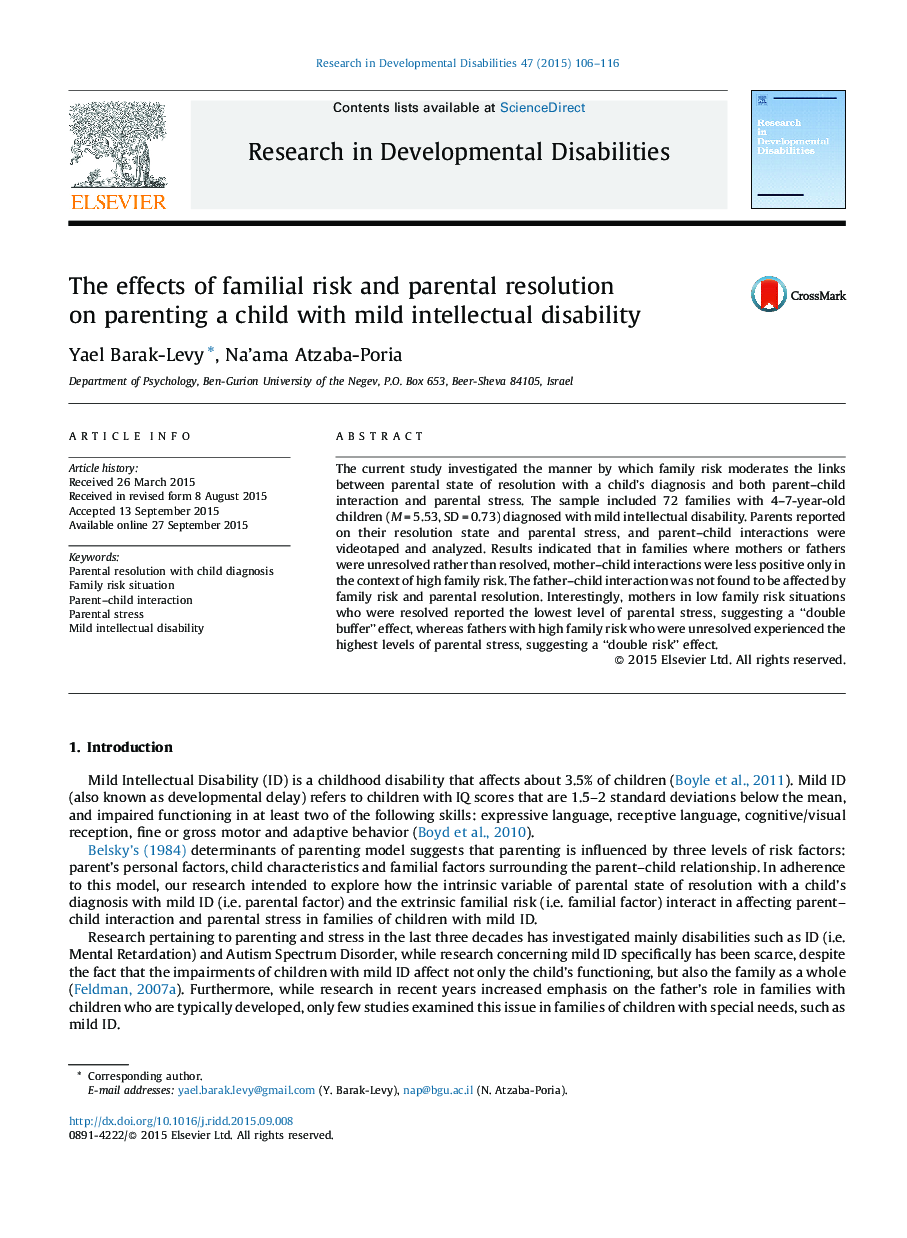| Article ID | Journal | Published Year | Pages | File Type |
|---|---|---|---|---|
| 371125 | Research in Developmental Disabilities | 2015 | 11 Pages |
•Joint effects of family risk and resolution with diagnosis of mild ID are examined.•Moderation effects are explored for parent–child interaction and parental stress.•Lack of resolution with high family risk effect mother–child interaction negatively.•“Double buffer” effect found for mothers as “double risk” effect found for fathers.
The current study investigated the manner by which family risk moderates the links between parental state of resolution with a child's diagnosis and both parent–child interaction and parental stress. The sample included 72 families with 4–7-year-old children (M = 5.53, SD = 0.73) diagnosed with mild intellectual disability. Parents reported on their resolution state and parental stress, and parent–child interactions were videotaped and analyzed. Results indicated that in families where mothers or fathers were unresolved rather than resolved, mother–child interactions were less positive only in the context of high family risk. The father–child interaction was not found to be affected by family risk and parental resolution. Interestingly, mothers in low family risk situations who were resolved reported the lowest level of parental stress, suggesting a “double buffer” effect, whereas fathers with high family risk who were unresolved experienced the highest levels of parental stress, suggesting a “double risk” effect.
